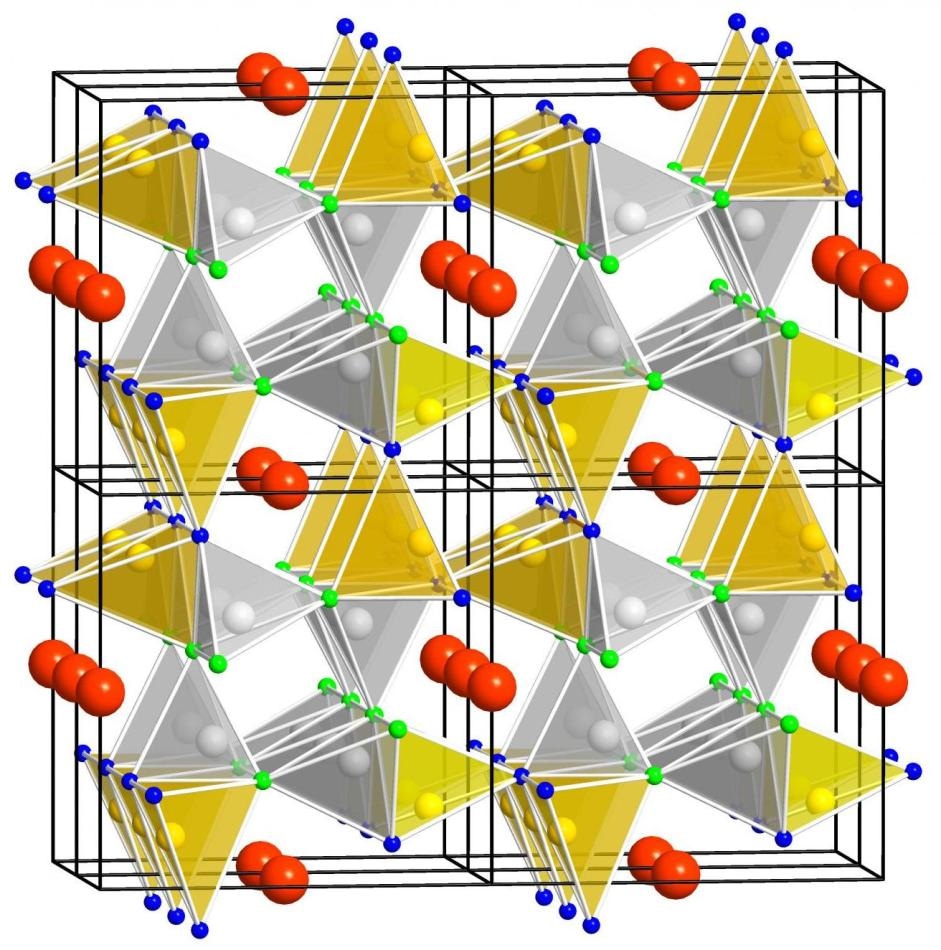Apr 25 2019
The human eye is specifically sensitive to green, but it is not that sensitive to red and blue. At present, a group of chemists, under the guidance of Hubert Huppertz, have created a new red phosphor whose light is well sensed by the eye.
 The crystal structure of the SALON phosphor is the reason for its excellent luminescence properties. (Image credit: Uni Innsbruck)
The crystal structure of the SALON phosphor is the reason for its excellent luminescence properties. (Image credit: Uni Innsbruck)
This improves the light yield of white LEDs by approximately one-sixth, which can considerably enhance the energy efficiency of lighting systems.
Light emitting diodes (LEDs) can only produce light of a specific color. However, white light can be produced using various color mixing methods.
In a white LED, red and yellow-green phosphors are excited by the light from a blue diode. The particles emit light in the red and green range, and in combination with the blue light they produce white light.
Hubert Huppertz, Institute of General, Inorganic and Theoretical Chemistry, University of Innsbruck
He and his colleagues have been striving to enhance the green and red phosphors. In a joint venture with OSRAM Opto Semiconductors, his group has now successfully produced a new red phosphor that has exceptional luminescence properties and can make LED lighting considerably more energy efficient.
Color Shift Improves Luminous Efficacy
The potent red phosphor Sr[Li2Al2O2N2]:Eu2+—referred to as SALON by the scientists—satisfies all the needs for the optical properties of a phosphor. The improvement returns to research conducted by Hubert Huppertz at the University of Bayreuth. As part of his doctoral thesis, he produced nitrides doped with fluorescent europium. Later, these were optimized more by the working team in Munich and are now extensively employed.
These red phosphors are responsible in part for the fact that in addition to radiating cold white, LEDs also radiate warm white. Fascinatingly, the human eye reacts most sensitively to the color green. The eye is not that sensitive in the red and blue regions. While these phosphors emit red light in the visible range, a major part of the energy enters the infrared range, which cannot be perceived by the human eye. At present, the fluorescent material created in Innsbruck has succeeded in somewhat shifting the light emission from red toward blue.
“Since initially, only a few very small particles were available in a very inhomogeneous sample, it was difficult to optimize the synthesis,” stated doctoral student Gregor Hoerder. The innovation was achieved when the scientists could separate a single crystal from one of the most potential synthesis products and hence determine the structure of the new material.
The substance is synthesized in such a way that it emits more orange than red. With SALON we have less energy loss, it emits exactly in the red range we can see.
Hubert Huppertz, Institute of General, Inorganic and Theoretical Chemistry, University of Innsbruck
The new material was further characterized with the involvement of OSRAM Opto Semiconductors, a strong industrial partner, the Fraunhofer Institute for Microstructures of Materials and Systems IMWS in Halle, and Dirk Johrendt’s research group at the Ludwig Maximilian University in Munich. The progress has already been filed for patent.